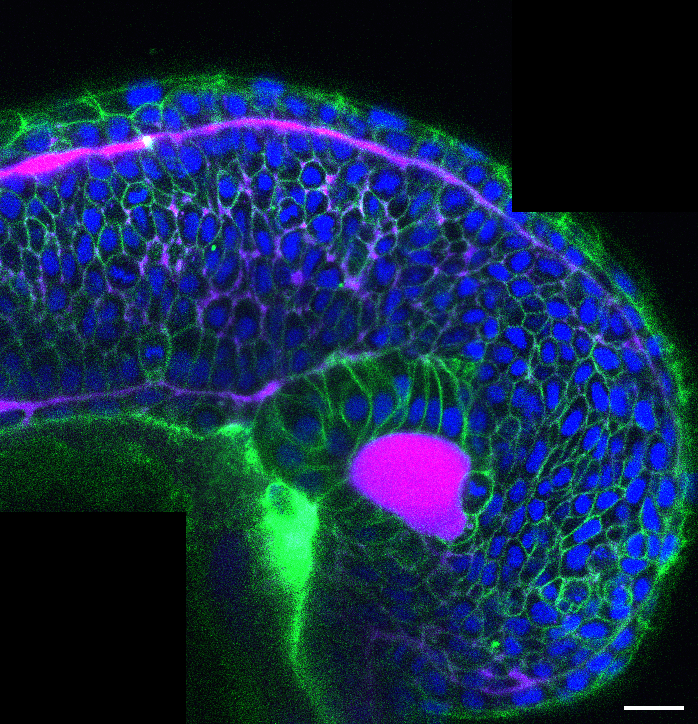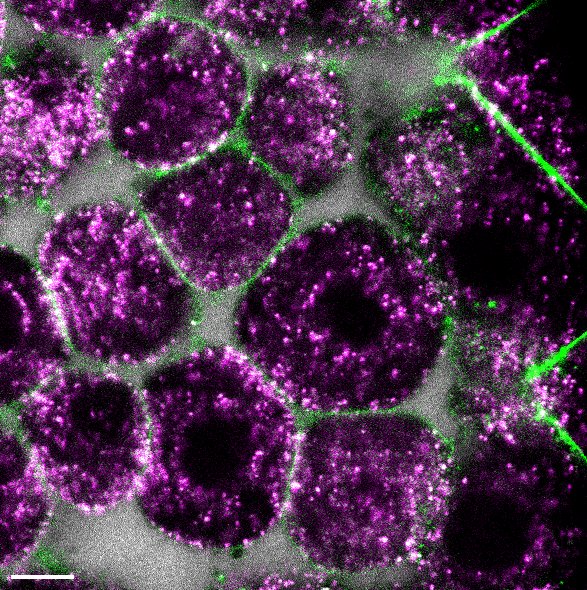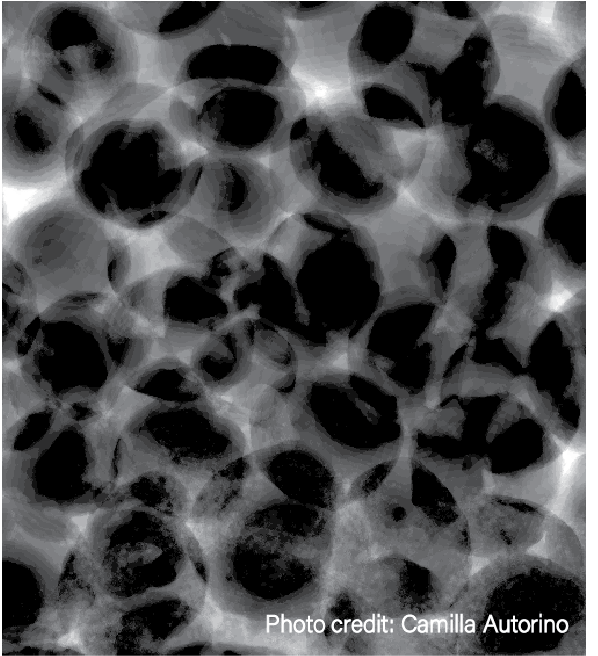The Role of different Material Phase Transitions in Shaping Tissue Organization
Zebrafish early embryos undergo dramatic changes in their material properties, which critically influence their morphogenesis. By developing optogenetic techniques and implementing genetic mutants alongside pharmacological interventions, Cristina can manipulate the key parameters that govern these tissue properties (see image: Sagittal view of a wild-type D. rerio embryo during gastrulation compared to an optogenetically fluidized embryo at the same developmental stage). Cristina and Laura teamed up to explore how different material phase transitions contribute to the overall tissue architecture using these approaches. Cristina further supports the group by optimising new methods including transcriptomics and metabolomics.
About the Scientist: Cristina is a Biologist who graduated from the University of Barcelona (UB), where she developed a strong interest in Developmental Biology. Her early research at UB’s Genetics Department focused on the role of Selenoproteins in Drosophila melanogaster. After completing her Ph.D., Cristina expanded her expertise in growth regulation and metabolism at the German Cancer Research Center (DKFZ). Cristina then joined the De Renzis group at EMBL as a research technician, working with optogenetic tools in Drosophila, embracing a Synthetic Biology approach to Developmental Biology questions. Since 2020, she has been a Scientific Officer in the Petridou group.



